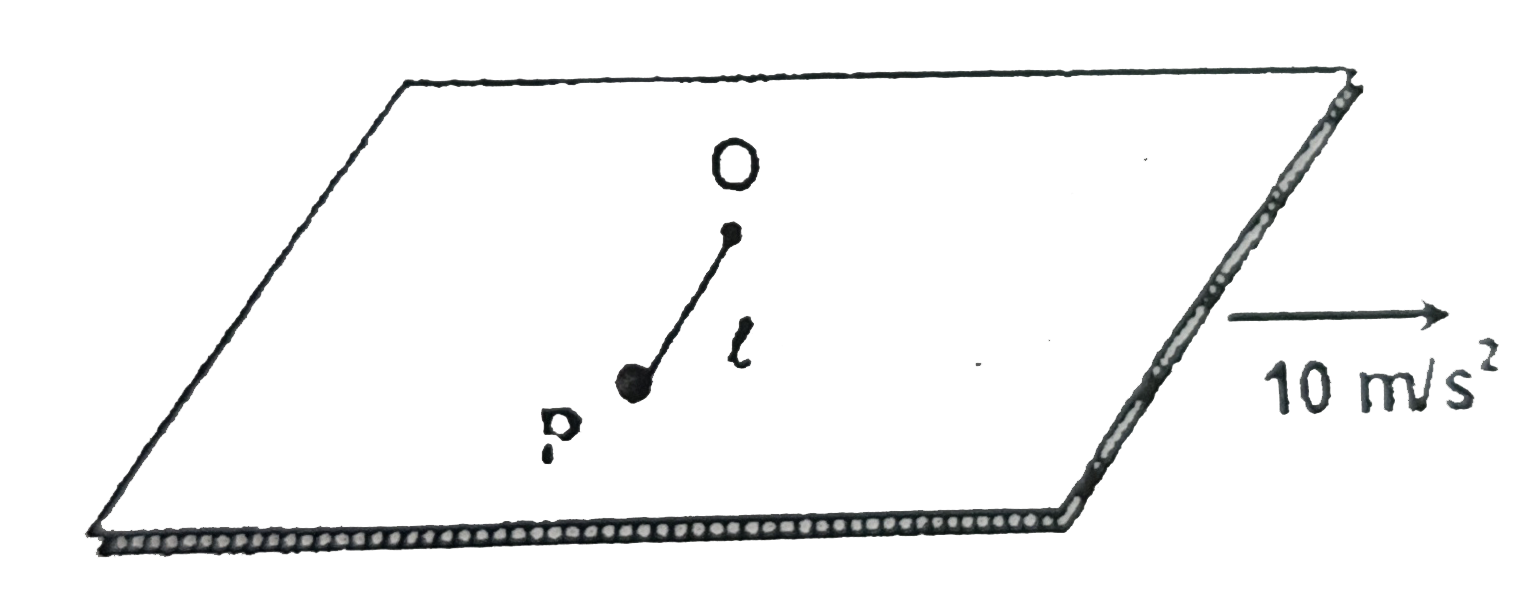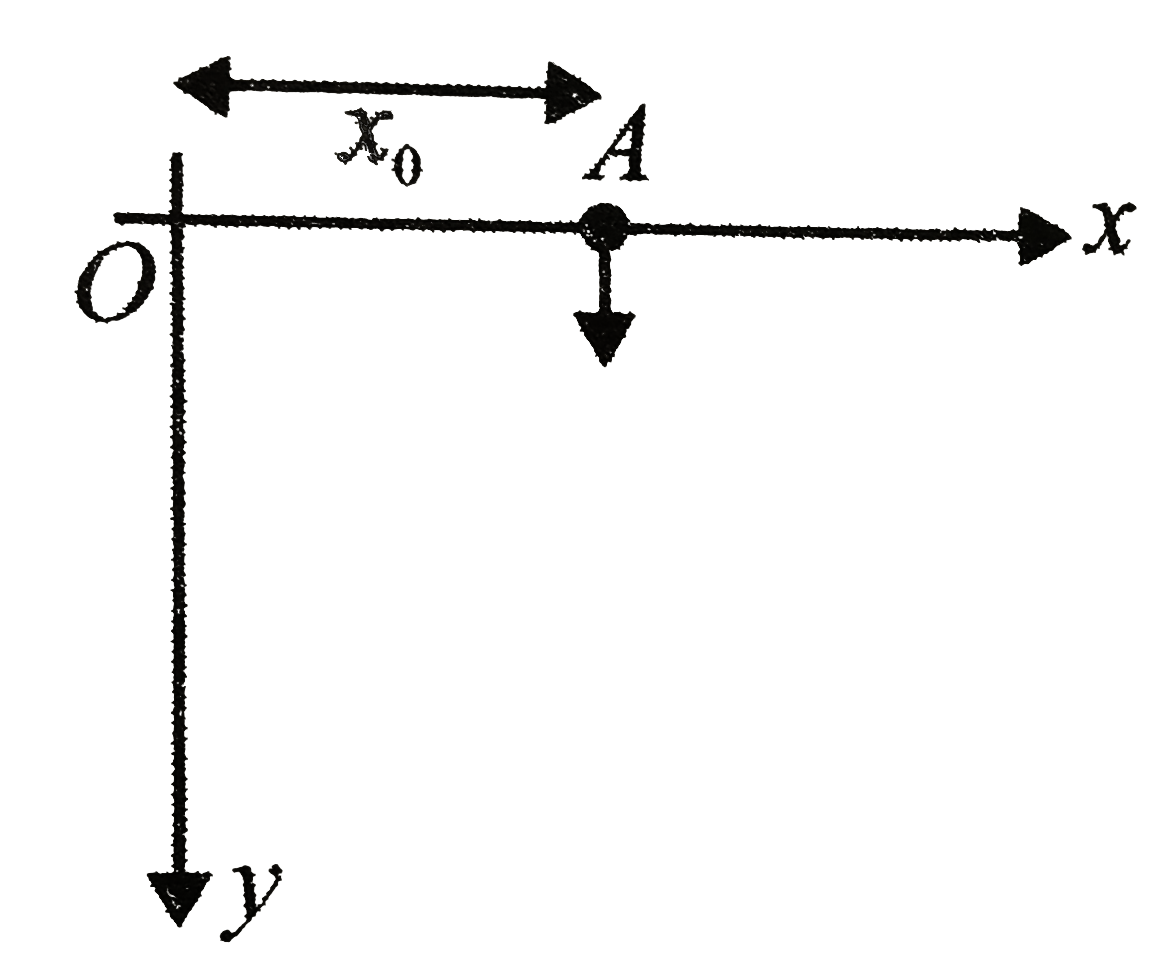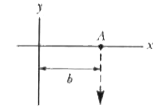A heavy particle of mass m falls freely near the earth's surface.Whati si the torque acting on this particle about a point 50 cm east to the lie of motiin? Does this a point 50 cm east to the line of motion? Does this toruque produce any angular accelertio in the particle?
Step by step video & image solution for A heavy particle of mass m falls freely near the earth's surface.Whati si the torque acting on this particle about a point 50 cm east to the lie of motiin? Does this a point 50 cm east to the line of motion? Does this toruque produce any angular accelertio in the particle? by Physics experts to help you in doubts & scoring excellent marks in Class 11 exams.
Topper's Solved these Questions
- BOOK - HC VERMACHAPTER - ROTATIONAL MECHANICSEXERCISE - Objective 126videos
ROTATIONAL MECHANICS
- BOOK - HC VERMACHAPTER - ROTATIONAL MECHANICSEXERCISE - Objective 215videos
ROTATIONAL MECHANICS
- BOOK - HC VERMACHAPTER - ROTATIONAL MECHANICSEXERCISE - Worked Out Examples29videos
ROTATIONAL MECHANICS
- BOOK - HC VERMACHAPTER - REST AND MOTION : KINEMATICSEXERCISE - Exercises51videos
REST AND MOTION : KINEMATICS
- BOOK - HC VERMACHAPTER - SIMPLE HARMONIC MOTIONEXERCISE - Exercises58videos
SIMPLE HARMONIC MOTION
Similar Questions
A particle of mass m is projected with a speed v at an angle θ with the horizontal. Find the angular momentum of the particle about an axis passing through point of projection and perpendicular to the plane of motion of the particle.
(a) When the particle is at maximum height and
(b) When the particle is just about to collide with the horizontal surfaceView SolutionShow that the angular momentum about any point of a single particle moving with constant velocity remains constant throughout the motion. Is there any external torque on the particle ?
View Solution
Knowledge Check
- Question 1 - Select One or More
A particle falls freely near the surface of the earth. Consider a fixed point O (not vertically below the particle) on the ground.
AAngular momentum of the particle about O is increasing.BTorque of the gravitational force on the particle about O is decreasing.CThe moment of inertia of the particle about O is decreasing.DThe angular velocity of the particle about O is increasing. - Question 2 - Select One or More
A particle starts moving along a straight line path with velocity 10m/s. After 5s the distance of the particle from the starting point is 50m. Which of the following statements about the nature of motion of the particle are correct?
AThe body may be speeding up with a constant positve acceleration.BThe body may be moving with a constant velocity.CThe body may have a constant negative acceleration.DThe body may be first accelerated and then retarded.
A massive horizontal platform is moving horizontally with a constant acceleration of 10m/s2 as shown in the figure. A particle P of mass m=1kg is kept at rest at the smooth surface as shown in the figure. The particle is hinged at O
with the help of a massless rod OP of length 0.9m. Hinge O is fixed on the platform and the rod can freely rotate about point O. Now the particle P is imparted a velocity in the opposite direction of the platform's acceleration such that it is just able to complete the circular motion about point O. Then the maximum tension appearing in the rod during the motion is 10n. Find the value of n.
 View Solution
View SolutionA particle of mass m is released from rest at point A in Fig., falling parallel to the (vertical) y-axis. Find the angular momentum of the particle at any time t with respect to the same origin O.
 View Solution
View SolutionA particle moving with uniform acceleration along a straight line ABC rosses point A at t=0 with a velocity 12ms−1. is 40m away from A andC is 64m away from A. The particle passes B at t=4 s.<br>a.Afterwˆtimewillthepartic≤beatC?<br>b.WˆisitsvelocityatC?<br>c.Wˆdoesthepartic≤reachAaga∈?<br>d.Locatethep∮wherethepartic≤reversesitsdirectionofmotion.<br>e.F∈dthedistancecoveredbythepartic≤∈thefirst15 s.
View SolutionIn Fig. 10-73, a particle of mass m is released from rest at point A, at distance b from the origin, and falls parallel to a vertical y axis. As a function of time t and with respect to the origin, find the magnitudes of (a) the torque τ on the particle due to the gravitational force and (b) the angular momentum L of the particle. ( c) From those results, verify that τ=dL/dt.
 View Solution
View SolutionA large insulating thick sheet of thickness 2d is charged with a Wliforrn volume charge density p. A particle of mass m, carrying a charge q having a sign opposite to that of the sheet, is released from the surface of the sheet. The sheet does not offer any mechanical resistance to the motion of the particle. Find the oscillation frequency v of the particle inside the sheet
View SolutionA massive horizontal platform is moving horizontally with a constant acceleration of 10m/s2 as shown in the figure. A particlem P of mass m=1 kg is kept at rest on a smooth surface as shown in the figure. The particle is hinged at O with the help of a massless rod OP of length 0.9 m. Hinge O is fixed on the platform and the rod can freely rotate about O. Now the particle P is imparted a velocity in the opposite direction of the platform's acceleration such that it is just able to complete the circular motion about point O. Then the maximum tension (in N) appearing in the rod during the motion is 10 n. Find the value of n
 View Solution
View Solution

